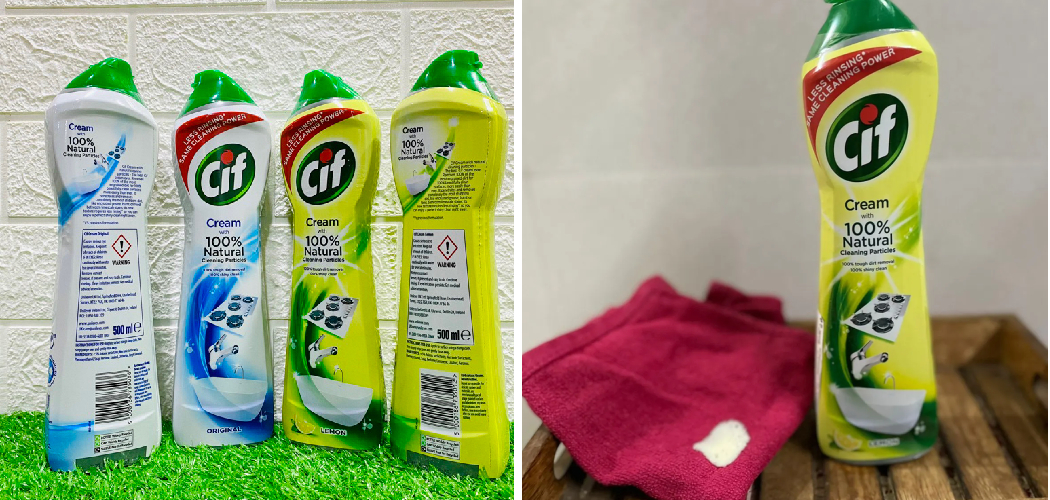Cif Cream is renowned for its powerful cleaning properties, making it an indispensable ally in maintaining the sparkle and hygiene of your bathroom. Designed to tackle tough stains, limescale, and soap scum, Cif Cream combines abrasive cleaning particles with a unique formula that ensures a deep clean without damaging surfaces.
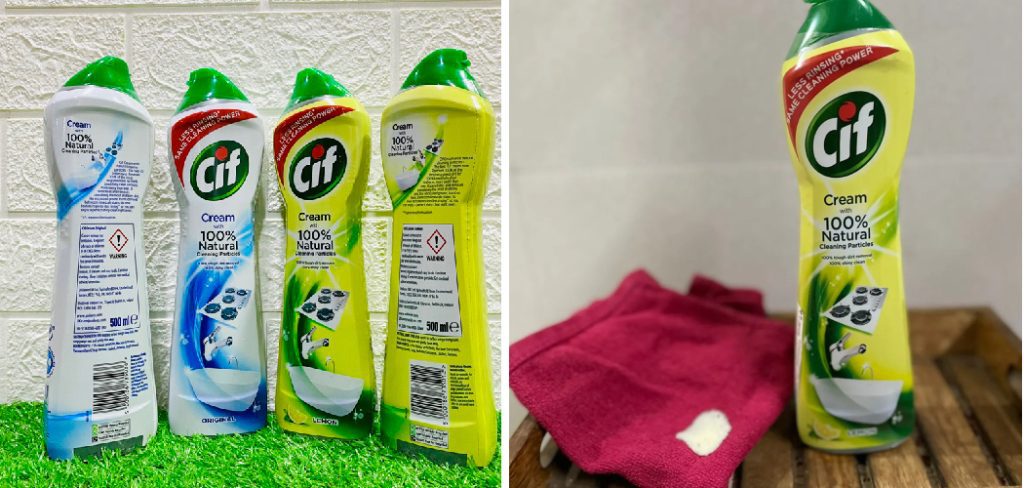
In this guide on how to use cif cream in bathroom, we’ll introduce you to the essentials of using Cif Cream effectively in your bathroom, providing tips and techniques to enhance the cleanliness and shine of your fittings, tiles, and bathtubs. Whether you’re dealing with stubborn stains or simply looking to refresh your bathroom’s appearance, Cif Cream is your go-to solution for achieving a pristine and welcoming space.
What is Cif Cream?
Cif Cream, also known as Jif in some countries, is a multi-purpose cleaning product manufactured by Unilever. It comes in a cream form and contains micro-particles that help remove dirt, grime, and stains from various surfaces.
The brand has been providing effective cleaning solutions for over 50 years and has become a household name trusted by millions of people worldwide. Cif Cream is specially designed to clean and protect surfaces, leaving them sparkling and smelling fresh.
You can find Cif Cream in various forms, such as sprays and wipes, but the cream form is most suitable for bathroom cleaning. It comes in a squeezable bottle with a flip-top cap, allowing you to control the amount of product dispensed.
Why Use Cif Cream in the Bathroom?
The bathroom is one of the most used and easily dirtied areas in a house. With its high humidity and frequent use, it’s no wonder that bathrooms require regular cleaning to maintain hygiene and prevent mold growth.
This is where Cif Cream comes in handy. Its powerful formula works wonders on tough bathroom stains, grease, soap scum, and watermarks. It’s also gentle on surfaces, making it suitable for a wide range of bathroom fixtures and fittings such as tiles, sinks, bathtubs, and shower screens.

It’s a time-saving product that allows you to clean your bathroom effectively and quickly, without the need for multiple cleaning products. With Cif Cream, you can achieve a sparkling bathroom with minimal effort.
You can use Cif Cream in your bathroom on a daily or weekly basis, depending on the level of dirt and usage. Regular use will help prevent tough stains from building up, making it easier to maintain a clean and fresh bathroom.
Needed Materials
To use Cif Cream in your bathroom effectively, you’ll need the following materials:
A Bottle of Cif Cream:
As mentioned earlier, Cif Cream comes in a squeezable bottle. You can choose from various options available in the market, such as the original formula or specialized versions for different surfaces.
A Sponge or Cleaning Cloth:
A sponge or cleaning cloth will help you apply and spread the Cif Cream on surfaces evenly. It also allows you to scrub away tough stains without damaging the surface.
Water:
Water is an essential component of any cleaning process. You’ll need a bucket or spray bottle filled with water to rinse off the Cif Cream after application.

Optional: Protective Gloves and Mask:
While Cif Cream is safe to use, some people may have sensitive skin or allergies. If you fall into this category, it’s advisable to wear protective gloves and a mask while using Cif Cream to avoid any possible reactions.
10 Step-by-step Guidelines on How to Use Cif Cream in Bathroom
Step 1: Prepare the Area
Before you start cleaning, remove any items or clutter from your bathroom surfaces. This will allow you to have a clear working area and prevent any products from accidentally staining or damaging your belongings.
You can also use this opportunity to declutter and organize your bathroom items. But, if you’re short on time, simply move them to the side and tackle them later. The goal is to have an unobstructed space for cleaning.
Step 2: Squeeze Cif Cream onto the Sponge
Take your sponge or cleaning cloth and squeeze a small amount of Cif Cream onto it. Start with a small amount and add more as needed to avoid product waste. A little goes a long way, so you don’t need to cover the entire sponge with Cif Cream.
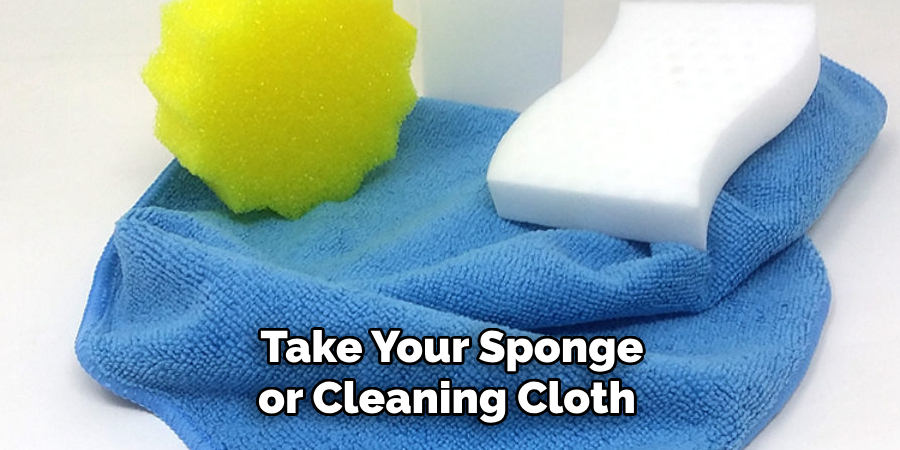
It’s better to apply more product as needed than to have excessive amounts that may be difficult to remove. The size of the area you’re cleaning will determine the amount of Cif Cream needed. You can always add more if you need to. But, if you apply too much, you may have to rinse and reapply the product.
Step 3: Start at the Top
To ensure an efficient and thoroughly clean, always start at the top and work your way down. This allows any dirt or debris to fall onto surfaces that haven’t been cleaned yet and prevents you from having to redo areas.
It’s also a more practical approach, as it saves you from constantly bending over or reaching up. The topmost surfaces in a bathroom are usually mirrors, cabinets, and shelves. You can also start with the ceiling if it requires cleaning.
Step 4: Apply Cif Cream to the Surfaces
Using your sponge or cleaning cloth, start applying the Cif Cream to the surfaces. Ensure you cover all the areas that need cleaning, including corners and edges. For larger surface areas, use a circular motion to spread the product evenly.
For smaller or tougher stains, you can apply more pressure and scrub in a back-and-forth motion. You can also let the product sit for a few minutes before scrubbing to allow it to work its magic on tough stains. It’s best to test the product on a small, inconspicuous area first, especially if you haven’t used it before.
Step 5: Let it Sit for a Few Minutes
After applying the Cif Cream, let it sit for a few minutes to allow it to penetrate and loosen any dirt or stains. This is especially helpful for tougher stains that may require more time to dissolve. While you wait, you can move on to cleaning other areas of your bathroom.
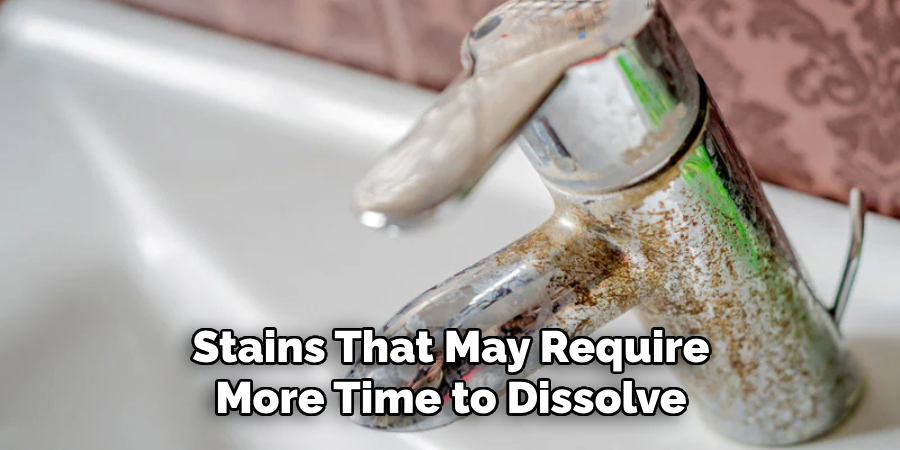
The recommended wait time is 3-5 minutes, but you can adjust this based on the level of dirt and stains. But, avoid leaving the product on for too long as it may dry out and become more challenging to remove. It’s always best to follow the instructions on the product label.
Step 6: Scrub with the Sponge
Once the Cif Cream has sat for a few minutes, start scrubbing the surface with your sponge or cleaning cloth. You’ll notice that the product has loosened and lifted any dirt or stains, making it easier to remove. Use a back-and-forth motion for tougher stains and circular motions for larger areas.
Don’t apply too much pressure as this may damage the surface, especially if it’s delicate or made of porous materials. You can also rinse and wring out the sponge or cloth to remove any product build-up and make it more effective.
Step 7: Wipe with a Damp Cloth
After scrubbing, take a damp cloth and wipe off the Cif Cream from the surface. Using a damp cloth or sponge will help remove any residue and ensure a streak-free finish.
You can also rinse and wring out the cloth as needed to prevent spreading dirt or product onto other areas. It’s best to use clean water for this step, but if you’re short on time, you can also use wet wipes.
It’s crucial to remove all the products thoroughly, as any residue left behind may attract more dirt and make your efforts futile. You can also use a separate cloth for drying if you want to speed up the process.
Step 8: Rinse with Water
After wiping off the Cif Cream, it’s essential to rinse the surfaces with water. You can use a bucket or spray bottle filled with clean water for this step. Simply pour or spray the water onto the surface and wipe it off using a clean cloth or sponge. This will remove any remaining residue and ensure a spotless finish.
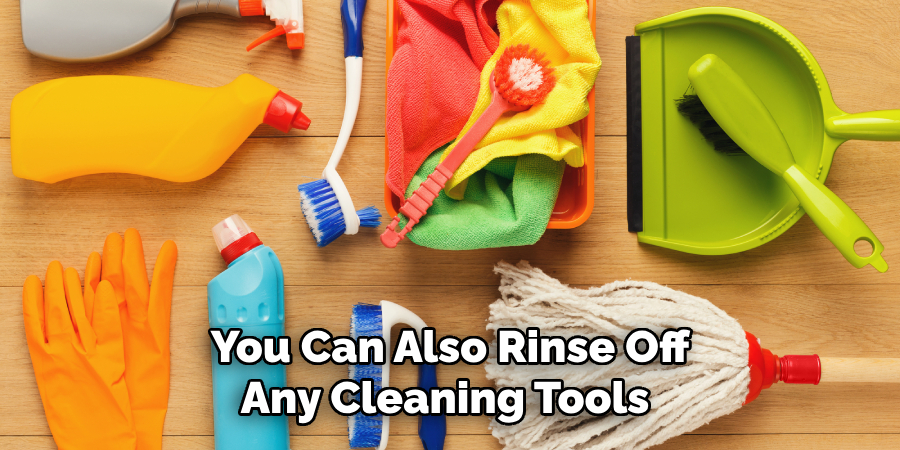
You can also rinse off any cleaning tools you use, like sponges or cloths, to prevent product build-up and maintain their effectiveness. But, if you’re short on time, you can also skip this step and just wipe off the Cif Cream with a damp cloth.
Step 9: Dry with a Clean Cloth
Once the surfaces are clean and rinsed, use a clean cloth to dry them. This step is especially useful for preventing water spots or streaks on shiny surfaces like mirrors or tiles. It’s best to use a lint-free cloth or microfiber towel for this step to avoid leaving any lint or residue on the surfaces.
You can also let the surfaces air dry if you prefer, but this may take longer, especially in humid environments. But, avoid using a hairdryer or other heat sources to speed up the drying process as this may cause damage. It’s best to be patient and let the surfaces dry naturally.
Step 10: Dispose of Used Materials
After cleaning your bathroom, it’s essential to dispose of any used materials properly. This includes rinsing and wringing out sponges or cleaning cloths, throwing away wipes, and disposing of empty product bottles.
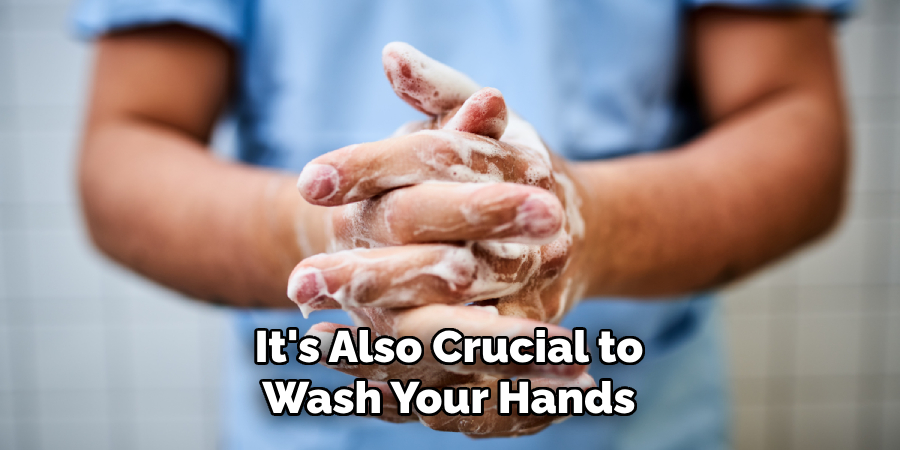
If you have any leftover Cif Cream, make sure to close the lid tightly and store it in a cool, dry place for future use. It’s also crucial to wash your hands after cleaning to prevent any product residue from coming into contact with your skin.
Keeping a clean and organized bathroom not only makes it more aesthetically pleasing but also promotes good hygiene and prevents the growth of harmful bacteria. And with Cif Cream, you can achieve a sparkling clean bathroom in just a few easy steps. So, next time you tackle your bathroom cleaning routine, remember these tips and tricks to make the process quick and effective.
Following these steps on how to use cif cream in bathroom and using the right products can make all the difference in achieving a sparkling clean bathroom. So don’t dread your cleaning tasks, instead embrace them with confidence knowing that your bathroom will be left spotless and germ-free. And with regular maintenance using Cif Cream, your bathroom can stay clean and fresh for a longer time.
Alternatives and Complementary Products
While Cif Cream is an excellent product for cleaning your bathroom, there are also a few other options you can consider to achieve the same results. Some people may prefer different cleaning methods or have specific preferences when it comes to products. Here are some alternatives and complementary products that you can try:
Vinegar and Baking Soda:
These household items are known for their natural cleaning properties and can be used to clean various surfaces in your bathroom. Simply mix equal parts of vinegar and baking soda to form a paste and use it to scrub surfaces like the bathtub, sink, or tiles. Let it sit for a few minutes before rinsing with water.
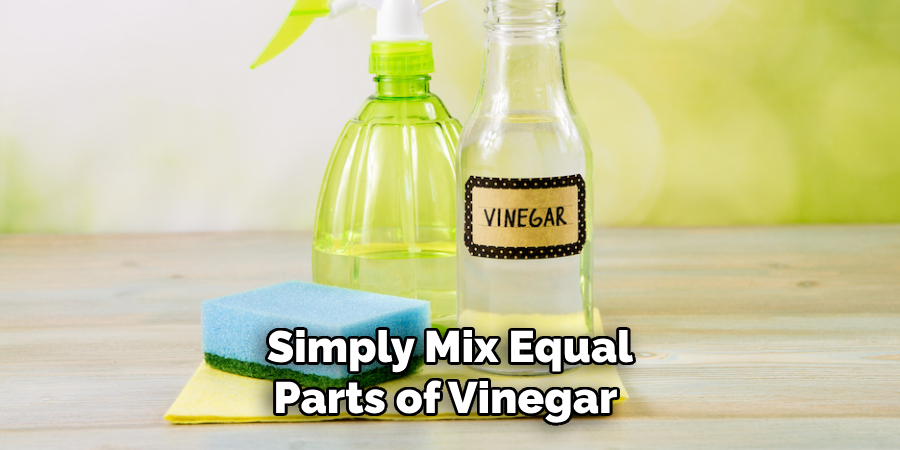
Bleach:
Bleach is a powerful disinfectant that can effectively kill germs and bacteria in your bathroom. It’s best to use bleach in a well-ventilated area and follow the instructions on the product label for safe usage. You can also mix it with water for a milder solution.
Microfiber Cloths:
These cloths are made of tiny fibers that can trap dirt and bacteria, making them an excellent choice for wiping surfaces in your bathroom. They are also reusable, making them an eco-friendly option.
Toilet Brush and Cleaner:
For cleaning the toilet specifically, a toilet brush and cleaner can be very effective. Look for products that are specifically designed for removing stains and disinfecting toilets.
Air Freshener:
After cleaning your bathroom, using an air freshener can give it a pleasant scent and keep it smelling clean for longer. Look for options with natural ingredients or essential oils for a more eco-friendly and chemical-free option.
Remember to always read the product labels and follow instructions for safe and effective usage of any cleaning products. And don’t be afraid to try different methods or products to find what works best for you and your bathroom cleaning routine.
Special Considerations for Specific Bathroom Surfaces
Different surfaces in your bathroom may require different cleaning methods and products. Here are some tips to keep in mind when cleaning specific bathroom surfaces:
Ceramic Tiles:
Ceramic tiles are relatively easy to clean, but it’s essential to avoid using abrasive cleaners or tools that can scratch the surface. Using Cif Cream can effectively remove dirt and grime from ceramic tiles without causing damage.
Glass:
When cleaning glass surfaces, it’s best to use a glass cleaner or mix equal parts of vinegar and water in a spray bottle. Use a clean cloth or newspaper to wipe the surface for a streak-free finish. Avoid using abrasive cleaners or tools on glass surfaces as they can cause scratches.
Stainless Steel:
Stainless steel fixtures like faucets or showerheads can be cleaned with Cif Cream, but make sure to rinse and dry them thoroughly to prevent water spots. You can also use specialized stainless steel cleaners for a shiny finish.
Grout:
Grout is the line between tiles that are prone to collecting dirt and grime. To clean grout, you can mix equal parts of bleach and water and use a toothbrush to scrub the lines. Rinse thoroughly with water afterward.
Shower Curtains:
Shower curtains can be cleaned by hand or in the washing machine using warm water and mild detergent. Adding a cup of vinegar during the rinse cycle can help remove any built-up residue. Hang dry or put them back up while still damp to prevent wrinkles.
With these tips, you can effectively clean all the surfaces in your bathroom without causing damage. Remember to always follow product instructions and test any new products on a small, inconspicuous area before using them on larger surfaces.
Frequently Asked Questions
Q1: Can I Use Cif Cream on All Bathroom Surfaces?
A1: Yes, Cif Cream is safe to use on most bathroom surfaces, including ceramic tiles, porcelain, and enamel. However, avoid using it on delicate or natural stonework as it can cause damage. You should also test it on a small area first before using it on larger surfaces.
Q2: How Often Should I Clean My Bathroom with Cif Cream?
A2: It’s recommended to clean your bathroom at least once a week to prevent the build-up of dirt and bacteria. However, the frequency of cleaning may vary depending on factors such as household size and usage.
Q3: Can I Use Cif Cream in a Toilet Bowl?
A3: While Cif Cream is not specifically designed for use in toilet bowls, it can be used to remove stains and disinfect the bowl. However, it’s best to use a specialized toilet cleaner for optimal results.
Final Thoughts
A clean and well-maintained bathroom is essential for a healthy and comfortable home. With Cif Cream and the right cleaning methods, you can achieve a sparkling clean bathroom in no time. Remember to also regularly declutter and organize your bathroom to prevent the build-up of dirt and bacteria.
And don’t forget to clean your bathroom regularly for a more manageable cleaning routine. By following these tips and tricks on how to use cif cream in bathroom, you can have a beautiful and hygienic bathroom that you can be proud of! So, next time you tackle your bathroom cleaning routine, remember these tips and tricks to make the process quick and effective. Happy cleaning!

